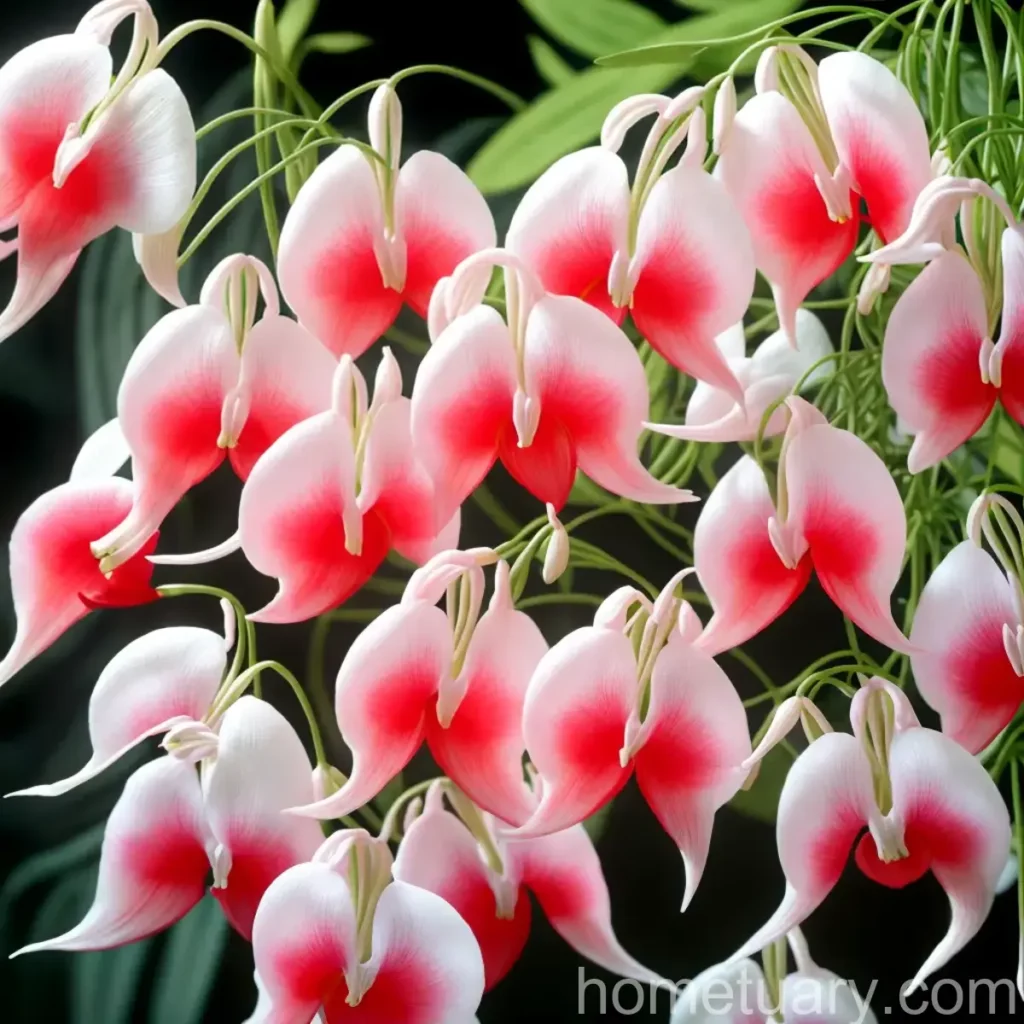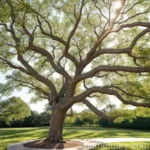Dicentra Eximia (Dicentra Eximia): A Complete Guide
As a plant scientist, I have always been fascinated by the diversity and beauty of plants. One such plant that has captured my attention is the Dicentra Eximia, commonly known as the Fringed Bleeding Heart. Its delicate foliage and unique heart-shaped flowers make it a charming addition to any garden or landscape. In this comprehensive guide, I will delve into the various aspects of Dicentra Eximia, including its culture, uses, care requirements, propagation, and much more.
What is Dicentra Eximia?
Dicentra Eximia, also known as Fringed Bleeding Heart or Wild Bleeding Heart, is a species of flowering plant in the poppy family (Papaveraceae). It is native to the eastern United States, where it can be found in woodland areas, along stream banks, and in rocky slopes. Dicentra Eximia is valued for its finely divided, fern-like foliage and unique heart-shaped flowers, which bloom from late spring to early summer.
Key Takeaways
Before diving into the specifics of Dicentra Eximia, let’s explore some key takeaways about this fascinating plant:
- Dicentra Eximia is an attractive perennial plant with delicate, fern-like foliage and heart-shaped flowers.
- This plant is native to the eastern United States and is well-suited for woodland gardens and shaded landscapes.
- Dicentra Eximia is popular for its low-maintenance nature and is often used in borders, rock gardens, and naturalized areas.
Now, let’s explore the various aspects of Dicentra Eximia in more detail.
Culture
Uses
Dicentra Eximia has several uses in landscaping and horticulture due to its unique characteristics and adaptability. Some of its primary uses include:
-
Garden Borders: The elegant, arching foliage and charming flowers make Dicentra Eximia an excellent choice for garden borders, where it can create a soft, romantic look.
-
Woodland Gardens: Given its native habitat, Dicentra Eximia is well-suited for woodland gardens, where it thrives in shady or partially shaded areas.
-
Rock Gardens: The delicate nature of Dicentra Eximia’s foliage and flowers makes it a beautiful addition to rock gardens, adding a touch of elegance and charm to the landscape.
-
Naturalized Landscapes: In more naturalized or informal landscapes, Dicentra Eximia adds a sense of wilderness and natural beauty, blending seamlessly with other woodland species.
Water
Dicentra Eximia thrives in moist, well-drained soil and generally prefers consistent moisture, especially during the growing season. While it can tolerate brief periods of dryness, it is important to ensure that the plant does not experience prolonged drought. Adequate water is essential for promoting healthy growth and prolific flowering.
Sunlight
In its natural habitat, Dicentra Eximia is often found in shaded or partially shaded areas, such as woodland edges and slopes. As a result, it is well-adapted to growing in dappled shade or filtered light. While it can tolerate some morning sun, particularly in cooler climates, it generally prefers to avoid direct, intense sunlight, especially during the hottest part of the day.
Fertilizer
When it comes to feeding Dicentra Eximia, a balanced, organic fertilizer can be applied in spring as new growth emerges. A slow-release fertilizer or well-aged compost can be gently worked into the soil around the plants to provide essential nutrients for healthy growth and flowering. It is important to avoid excessive use of high-nitrogen fertilizers, as these can encourage lush foliage at the expense of flowers.
Soil
Dicentra Eximia thrives in rich, humusy soil that is well-drained and retains moisture without becoming waterlogged. A slightly acidic to neutral soil pH is ideal for this plant, ranging from 6.0 to 7.0. Incorporating organic matter such as compost, leaf mold, or well-rotted manure can improve soil structure and fertility, creating an optimal growing environment for Dicentra Eximia.
Pruning
Pruning Dicentra Eximia is relatively minimal, primarily focusing on removing spent flowers and any discolored or damaged foliage. After the blooming period, gently trim back the foliage to encourage new growth and maintain a tidy appearance. In regions with hot summers, the plant may die back and go dormant, at which point it is advisable to cut back the foliage to the ground.
Propagation
Container Popularity
Dicentra Eximia is also well-suited for container cultivation, where its delicate beauty can be appreciated up close. Its compact growth habit and attractive foliage make it an excellent choice for adding a touch of elegance to containers and shaded patios.
Common Diseases
Dicentra Eximia is generally a low-maintenance plant with good disease resistance. However, like any plant, it may be susceptible to certain diseases under unfavorable conditions. Some common diseases that can affect Dicentra Eximia include:
-
Powdery Mildew: In humid or poorly ventilated conditions, Dicentra Eximia may be susceptible to powdery mildew, which can manifest as a white, powdery coating on the leaves.
-
Crown Rot: Excessive moisture or poorly drained soil can lead to crown rot, causing the plant to wilt and decline.
It is important to monitor the plant closely and provide optimal growing conditions to minimize the risk of disease.
Disease Diagnosis
When diagnosing potential diseases in Dicentra Eximia, be on the lookout for symptoms such as wilting, yellowing or browning foliage, abnormal growth patterns, or any signs of fungal infections. If any abnormalities are observed, it is essential to take prompt action to address the underlying issues and prevent the spread of disease.
Common Pests
Dicentra Eximia is relatively resistant to pests, but it may occasionally encounter pest issues in certain environments. Some common pests that may affect Dicentra Eximia include:
-
Aphids: These small, sap-sucking insects can colonize the tender shoots and flower buds of Dicentra Eximia, causing distortion and stunted growth.
-
Slugs and Snails: In damp, shaded areas, slugs and snails may feed on the foliage of Dicentra Eximia, leaving behind characteristic feeding marks.
Keeping the garden clean and free of debris, as well as employing natural predators and barriers, can help manage pest populations without the need for chemical pesticides.
Botanist’s Tips
As a plant scientist with a passion for Dicentra Eximia, I have gathered some valuable tips for cultivating and caring for this unique plant:
-
Shaded Environments: Dicentra Eximia thrives in shaded or partially shaded environments, making it an excellent choice for woodland gardens, where it can brighten up the understory with its delicate flowers.
-
Moisture Management: Providing consistent moisture is essential for the health and vigor of Dicentra Eximia. Mulching the soil around the plants can help retain soil moisture and regulate temperature, creating a favorable growing environment.
-
Pruning Protocol: Regular deadheading and light pruning can help promote continuous flowering and maintain the plant’s appearance. Additionally, removing any damaged or discolored foliage can prevent the spread of disease and improve overall plant health.
By adhering to these tips and understanding the specific needs of Dicentra Eximia, you can create an enchanting garden or landscape that showcases the beauty of this remarkable plant.
Fun Facts
To further appreciate the charm and allure of Dicentra Eximia, here are some fun facts about this captivating plant:
-
The common name “Bleeding Heart” is derived from the shape of the flowers, which resemble a stylized heart with a protruding droplet, giving the appearance of a bleeding heart.
-
Dicentra Eximia has been used in traditional medicine for its purported medicinal properties, with the roots of certain species being used in herbal remedies for various ailments.
-
This plant is not only a favorite of gardeners but also attracts pollinators such as bees and butterflies, adding to its ecological significance in the garden.
Links to External Resources
For further information on Dicentra Eximia and related topics, I recommend exploring the following resources:
By delving into these resources, you can gain a deeper understanding of Dicentra Eximia, its cultivation, and its role in horticulture and landscaping.
In conclusion, Dicentra Eximia is a captivating perennial plant with a rich history, charming appearance, and valuable contributions to garden landscapes. By uncovering its culture, care requirements, unique uses, and ecological significance, we can gain a newfound appreciation for this remarkable plant and its role in the natural world.
Remember, the journey of discovery continues as we explore the intricate beauty of plants and unravel their secrets, one petal at a time.
As we conclude our exploration of Dicentra Eximia, I hope this guide has provided valuable insights and practical tips for cultivating and appreciating this exquisite plant. Whether adorning a woodland garden, a shaded border, or a decorative container, Dicentra Eximia offers a touch of elegance and natural beauty to any setting.















